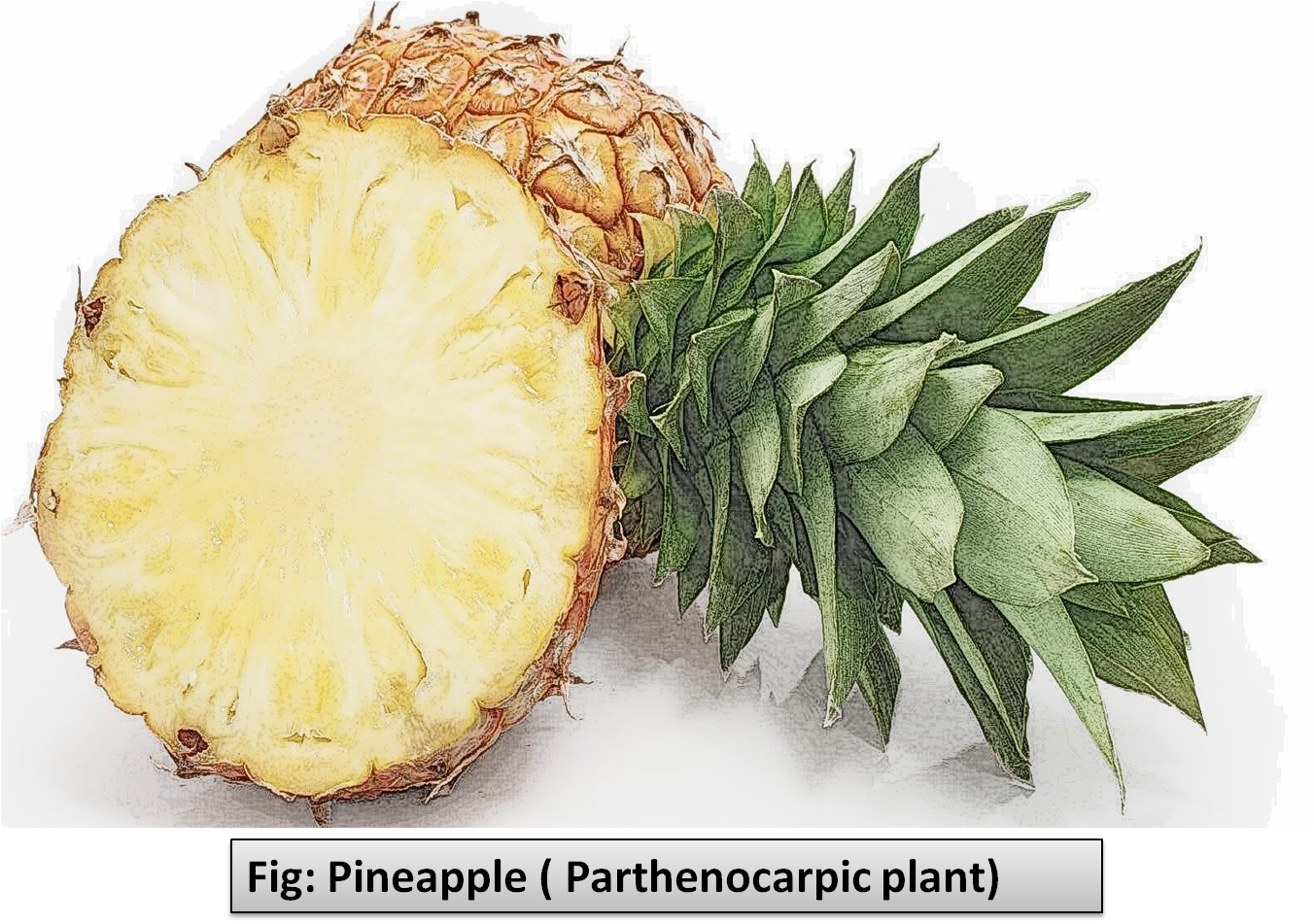
Differentiate between parthenocarpy and parthenogenesis.
Answer
482.7k+ views
Hint: Parthenocarpy and parthenogenesis are special types of asexual reproduction where usually a female part of the plant or animal is involved. It is different from sexual reproduction in respect of the participation of both the parents’ gamete.
Complete answer:
Difference between parthenocarpy and parthenogenesis:
Additional Information:
In parthenogenesis, three types of possibilities can be perceived:
- In haploid parthenogenesis, a haploid egg cell develops into a haploid individual.
-In diploid parthenogenesis, two sets of possibilities may occur. One, where the two haploid egg cells fuse with each other to form a diploid zygote like structure. The offspring will not be a clone of the mother as some recombination occurs. This is referred to as automixis.
-Another possibility of diploid parthenogenesis and apomixis involves the development of diploid cells of maternal tissues directly into a diploid individual. The maternal tissues do not undergo any meiosis or recombination. Therefore, the diploid individual is a clone of the mother cell.

Note: In angiosperms, double fertilization occurs when an egg cell is fertilized by a male gamete forming a diploid zygote and the second male gamete fuses with two polar nuclei forming a triploid primary endosperm nucleus (PEN) in the ovule. This leads to the development of ovary into fruit, ovule into seed, diploid zygote into an embryo, and PEN into the endosperm. In parthenocarpic plants, however, the fruit develops from the ovary without double fertilization. Thus, no seeds are produced. This is the reason that parthenocarpic plants are also known as seedless plants.
Complete answer:
Difference between parthenocarpy and parthenogenesis:
| Property | Parthenogenesis | Parthenocarpy |
| Definition | Development of an individual or offspring from an unfertilized egg. | Development of ovaries into fruits without fertilization. |
| Occurrence | In lower plants and invertebrates such as aphids, bees, ants, and rotifers. | It is found only in plants. |
| Ploidy or number of chromosomes | These plants are diploid or haploid | The plant body is diploid |
| Example | In honeybees, drones develop from unfertilized eggs of the diploid queen. | Seedless fruits of banana and pineapple. |
Additional Information:
In parthenogenesis, three types of possibilities can be perceived:
- In haploid parthenogenesis, a haploid egg cell develops into a haploid individual.
-In diploid parthenogenesis, two sets of possibilities may occur. One, where the two haploid egg cells fuse with each other to form a diploid zygote like structure. The offspring will not be a clone of the mother as some recombination occurs. This is referred to as automixis.
-Another possibility of diploid parthenogenesis and apomixis involves the development of diploid cells of maternal tissues directly into a diploid individual. The maternal tissues do not undergo any meiosis or recombination. Therefore, the diploid individual is a clone of the mother cell.

Note: In angiosperms, double fertilization occurs when an egg cell is fertilized by a male gamete forming a diploid zygote and the second male gamete fuses with two polar nuclei forming a triploid primary endosperm nucleus (PEN) in the ovule. This leads to the development of ovary into fruit, ovule into seed, diploid zygote into an embryo, and PEN into the endosperm. In parthenocarpic plants, however, the fruit develops from the ovary without double fertilization. Thus, no seeds are produced. This is the reason that parthenocarpic plants are also known as seedless plants.
Recently Updated Pages
Glucose when reduced with HI and red Phosphorus gives class 11 chemistry CBSE

The highest possible oxidation states of Uranium and class 11 chemistry CBSE

Find the value of x if the mode of the following data class 11 maths CBSE

Which of the following can be used in the Friedel Crafts class 11 chemistry CBSE

A sphere of mass 40 kg is attracted by a second sphere class 11 physics CBSE

Statement I Reactivity of aluminium decreases when class 11 chemistry CBSE

Trending doubts
10 examples of friction in our daily life

The correct order of melting point of 14th group elements class 11 chemistry CBSE

Difference Between Prokaryotic Cells and Eukaryotic Cells

One Metric ton is equal to kg A 10000 B 1000 C 100 class 11 physics CBSE

What is the specific heat capacity of ice water and class 11 physics CBSE

State and prove Bernoullis theorem class 11 physics CBSE




